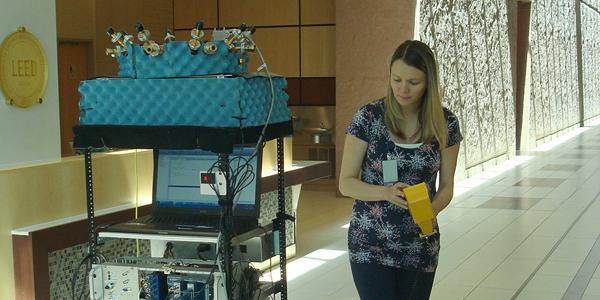NIST Develops New Method for Evaluating Antennas
National Institute of Standards and Technology (NIST) researchers have developed a method for assessing and selecting optimal antenna design for future fifth-generation (5G) cellphones and other wireless devices and base stations.
5G systems will avoid crowded, conventional wireless channels by using higher, millimeter-wave frequency bands. Because transmissions at these frequencies lose a lot of energy along the way, received signal strength can weaken. One solution is “smart” antennas that can form unusually narrow beams and quickly steers them in different directions.
Beamwidth—the area in space where signals are transmitted or received—affects wireless systems design and performance. The new process created by NIST could boost 5G wireless network capacity and reduce costs. The measurement-based method allows system designers and engineers to evaluate the most appropriate antenna beamwidths for real environments.
“Our new method could reduce costs by enabling greater success with initial network design, eliminating much of the trial and error that is now required,” NIST engineer Kate Remley said.
In the technique, NIST measurements covering a wide range of antenna beam angles are converted into an omnidirectional antenna pattern covering all angles equally. The omnidirectional pattern can then be segmented into narrower and narrower beamwidths. Users can assess how antenna beam characteristics are expected to perform in certain types of wireless channels.
This is the first detailed measurement-based study of how antenna beamwidth and orientation interact with the environment to affect millimeter-wave signal transmission. To read the full study visit ieee.org.





Comments